Llangeitho is situated on the river Aeron, about two miles west of Tregaron, and about five miles north of Lampeter. The men of Llangeitho who fell during both world wars are commemorated on the War Memorial, which stands in the Square at Llangeitho, and was unveiled on 28 March 1921. The nearby Chapel of Betws Lleucu also contains a wooden frame, with the names of the local men who served during the Great War, some of whom also fell, and are commemorated on the main Llangeitho Memorial. Many thanks to Mike Berrell for the photographs of the memorial.
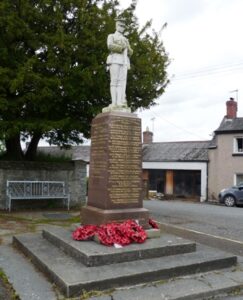
The Great War, 1914-1918
Charles Edward Agate, Private, 40951, Lincolnshire Regiment. Charles was born at London in 1880, and by 1901 was residing at Tyndolau, Llangeitho, working as a farm labourer. Charles looks to have been residing at Bath when war erupted, and he enlisted at Tonypandy into the Welsh Regiment. Charles was later transferred to the North Staffordshire Regiment, and was posted to France at some time in 1916, where he was transferred to the 10th Battalion, Lincolnshire Regiment. The battalion was known as the Grimsby Chums, and was attached to 101 Brigade, 34th Division. The battalion had suffered terrible casualties during the opening days of the Somme offensive, during the attack on at La Boiselle, losing almost half its strength. Charles was probably amongst a batch of drafts to the battalion as it rebuilt afterwards. The following year, the Division moved to the Arras sector, and took part in the Battle of the Scarpe. Charles was killed in action here on 28 April 1917, during the battalions attack on the Rouex Chemical Works. He was 37 years old, and is commemorated on the Arras Memorial, France.
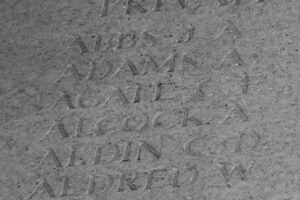
Benjamin Evan Stedman Davies, Captain, South Wales Borderers. Benjamin was the son of Peter and Mary Davies, of Caerllugest, Llangeitho. He worked as a Clerk for the Prudential Insurance at London prior to the war, and enlisted there into the 2nd Battalion, County of London Yeomanry. Benjamin was commissioned into the 11th Battalion, South Wales Borderers on 8 May 1915. The battalion was attached to 115 Brigade, 38th (Welsh) Division, and landed in France on 3 December 1915, spending their first winter in the trenches near Armentieres. In June they marched south to the Somme, where they were tasked with the capture of Mametz Wood. The attack on the wood began on 7 July, but met with fierce resistance, and it took until 14 July to totally clear the wood. The Division suffered terrible casualties at Mametz, and were taken out of the line, and moved to Ypres to rebuild. Here they fought at the Battle of Pilckem Ridge. The Battle was launched on the morning of 31 July 1917, and the 11th South Wales Borderers were tasked with the capture of Iron Cross. The objective was captured, and the battalion had reached the Steenbeek, encamping themselves at Au Bon Gite. Benjamin, now a Captain, was reconnoitring the area, when he was shot and killed by a sniper. Benjamin was 24 years old, and is commemorated on the Ypres (Menin Gate) Memorial, Belgium.
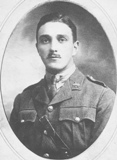
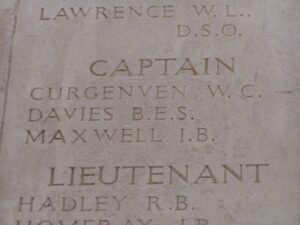
John Davies, Cadet, 175380, Royal Air Force. John was the son of Daniel and Elizabeth Davies, of Pencastell y Farw, Llangeitho. He enlisted into the Royal Air Force in 1918, training as Cadet. John died at RAF Uxbridge on 8 December 1918, following a motoring accident in London. He was 19 years old, and is buried at St. Caron Churchyard Extension, Tregaron.
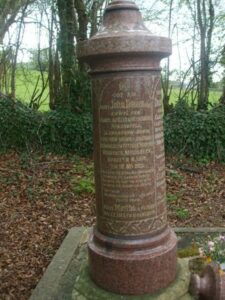
John Daniel Davies, Second Engineer, Mercantile Marine. John was born at Grangetown, Cardigan, the son of Daniel Davies. In August 1917 he married Mary Sarah Morris, and she set up the family home at Capel Llangeitho. John served in the Mercantile Marine as engineer aboard the SS Santa Amalia, a London registered cargo ship. On 28 December 1917, when 30 miles from Malin Head, Ireland she was torpedoed without warning and sunk by the German submarine U-19. John was among 43 men whose lives were lost that day. He was 28 years old, and is commemorated on the Tower Hill Memorial, London.
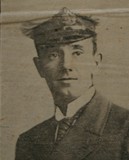
John Thomas Davies, Rifleman, S/31131, Rifle Brigade. John was born at Holloway, London on 25 February 1882, the son of John and Catherine Davies. The family were originally from Grange, Llangeitho, and prior to the war, John was living there with his Aunt and Uncle, while a student. John enlisted at Whitehall into the Rifle Brigade. At some time during 1916 he was posted to France, joining the 7th Battalion, Rifle Brigade, which was attached to 41 Brigade, 14th (Light) Division. In July 1916 they moved to the Somme, and fought at the Battle of Delville Wood, and then the Battle of Flers-Courcelette, and in March, 1917 followed the German Retreat to the Hindenburg Line. May saw them at Arras, where they took part in the First Battle of the Scarpe, and later at the Third Battle of the Scarpe, and then they were sent to Ypres, where they fought at the Third Battle of Ypres. John was wounded at Ypres, and evacuated to hospital at Le Tréport, where he died on 9 September 1917, aged 35. John is buried at Mont Huon Cemetery, Le Tréport, France.
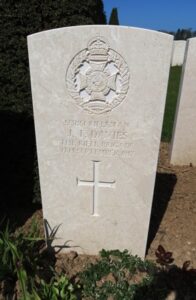
William David Davies, Private, 29742, South Wales Borderers. William was the son of John and Elizabeth Davies, of Cefncoed, Llangeitho, Llanio Road. He enlisted at Lampeter into the South Wales Borderers, and was posted to France in 1916, joining the 1st Battalion, South Wales Borderers, which was attached to 3 Brigade, 1st Division. The Division fought during the Somme Offensive from July 1916 onwards. It followed the German retreat to the Hindenburg Line in early 1917, and was then briefed for an operation on the Flanders Coast, moving there during the summer of 1917. When the Third Battle of Ypres had stalled in the mire, the Division was sent to Ypres, and fought at the Second Battle of Passchendaele. William was wounded at Passchendaele, and died of his wounds on 10 November 1917, aged 27. William’s grave was lost in continued fighting in the area, so he is commemorated on the Tyne Cot Memorial, Belgium.
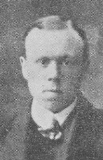
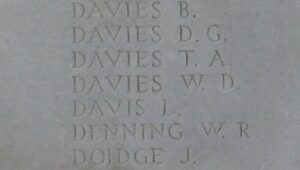
John Daniel Ebenezer, Lance Corporal, 40399, Royal Welsh Fusiliers. John was the son of David and Elizabeth Ebenezer, of Glangwenffrwd, Llangeitho. He enlisted at Lampeter into the army, and was posted to France in 1916, joining the 1st Battalion, Royal Welsh Fusiliers, which was attached to 22 Brigade, 7th Division. The battalion was the battalion of Siegfried Sassoon and Robert Graves, the famed war poets. The Division was on the Somme, and took part in the Battle of Albert, where it captured Mametz. It then fought at the Battle of Bazentin, and the Attacks on High Wood, playing a successful part in the ‘dawn attack’, and were also the first troops into High Wood. The Division then took part in the Battle of Delville Wood, and the Battle of Guillemont, before spending the winter on the Ancre. John was wounded over the winter, and evacuated to Doullens hospital, where he died on 13 January 1917, aged 20. John is buried at Doullens Communal Cemetery Extension No. 1, France.
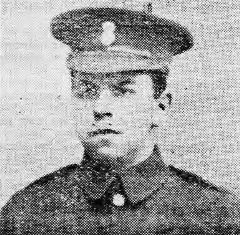
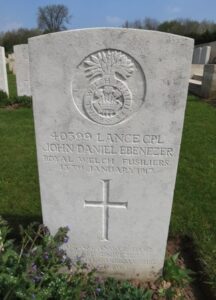
Daniel Evans, Private, 34784, Royal Welsh Fusiliers. Daniel was born at Llangeitho in 1897, the son of Jane Davies, of Bronbadarn. Prior to the war, the family resided at 85, Percy Road, Canning Town, London, and Daniel enlisted at Whitehall on 8 November 1915 into the 18th Battalion, Royal Welsh Fusiliers. On 7 April 1916 he landed in France, joining the 16th Battalion, Royal Welsh Fusiliers, which was attached to 113 Brigade, 38th (Welsh) Division. The Division was at Givenchy when Daniel joined his new battalion, and in June 1916 marched south to the Somme. On 7 July 1916 the Division attacked Mametz Wood. The initial attack failed, and it was three days later, on 10 July, that a fresh attack was mounted. The Welshmen fought a desperate contest for two days in the confines of the wood, and Daniel is recorded as having been killed here on 11 July 1916. He was 19 years old, and is commemorated on the Thiepval Memorial, France.
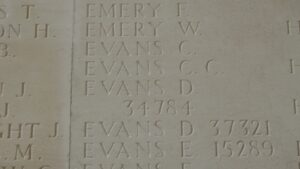
John Wynne Evans, Private, 28283, South Wales Borderers. John was born on 29 April 1879, the son of David Evans and Elizabeth Evans (nee Edwards), of Caergwyn, Llangeitho. He was educated at Aberystwyth University, prior to gaining a position as a warehouse manager at a soup works prior to the war, before emigrating to Canada in 1913. John returned to Britain in December 1915 to enlist at Brecon into the South Wales Borderers, and was posted to France in November 1916, joining the 2nd Battalion, South Wales Borderers, which was attached to 87 Brigade, 29th Division. The battalion was still on the Somme, after having suffered terrible losses on 1 July 1916 at Beaumont Hamel. In the Spring of 1917 they fought at the Battle of the Scarpe, which was part of the Arras Offensive, and then moved further north to Ypres. John was killed in action at Langemarck on 16 August 1917, aged 38. He was buried near the ruins of Montemial Farm, by the Steenbeek, by the battalion Chaplain, Reverend Swallow. Sadly his grave was lost, and John is now commemorated on the Tyne Cot Memorial, Belgium. Other men of the battalion killed the same day are buried at Artillery Wood Cemetery.
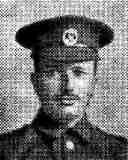
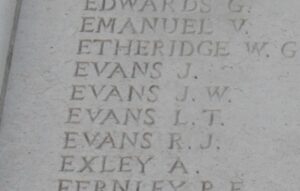
The Reverend Thomas Glasfryn Jones, Chaplain 4th Class, Army Chaplains’ Department. Thomas was born on 28 January 1884, the son of John and Mary Jones, of 3, Meidrym Road, Llangeitho. After attending Tregaron School, and studying for his B.A. at Lampeter, he graduated from St. Michael’s Theological College, Aberdare in 1906 and became Curate at Mostyn. He was offered the Curacy of Bylchau, near Denbigh but instead volunteered to serve with the Army Chaplains’ Department, and was commissioned on 3 July 1916 before landing in France on 5 July 1916, to join the 11th Battalion, South Wales Borderers, which was attached to the 38th (Welsh) Division. He was wounded near Bluet Farm on 24 March 1917 whilst attending to a wounded soldier and suffered gunshot wounds to his spine and lungs. Thomas was treated at the 46th Casualty Clearing Station at Mendinghem before being evacuated to the 7th Stationary Hospital at Boulogne. He was then brought back to England via Hospital Ship and was taken to the Empire Hospital, Vincent Square, London for treatment. Thomas died there of his wounds on 12 April 1917, aged 33. His remains were conveyed home and he was buried in St. Ceitho’s Churchyard, Llangeitho four days later. Two of his cousins were also killed: Thomas Arllwyd Jones and Stephens Jones Williams.
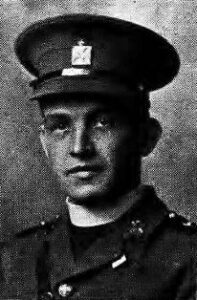
David Rowlands, Private, 10361, Devonshire Regiment. David was born in 1893, the son of John and Sarah Rowlands, of Davies Bank, Trefeitho. He worked as a horseman at Tyndolau, Llangeitho prior to the war, and enlisted at Merthyr into the 8th Battalion, Devonshire Regiment. The battalion formed at Exeter on 19 August 1914, attached to the 14th (Light) Division, and left the Division before landing at Le Havre on 26 July 1915. On 4 August 1915 the battalion was attached to 20 Brigade, 7th Division, at Loos. Within weeks of arriving in France, the battalion was thrown into the Battle of Loos on 25 September 1915. David was killed in action that day. He was 22 years old, and is commemorated on the Loos Memorial, France.
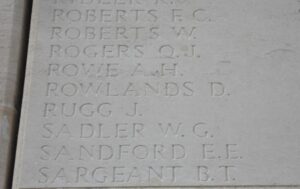
Thomas James Thomas, Corporal, 320187, Welsh Regiment. Thomas was the Son of Daniel and Elizabeth Thomas, of Cwmgwenin, Llangeitho. He enlisted at Lampeter into the Pembroke Yeomanry prior to the war, and moved with them to Norfolk after mobilisation. The Yeomanry sailed for Egypt in March 1916. In February 1917 the Pembroke Yeomanry was merged with the Glamorgan Yeomanry to form the 24th Battalion, Welsh Regiment, and was attached to 231 Brigade, 74th (Yeomanry) Division. The Division took part in the campaign in Palestine, and fought at the Battles of Gaza and Jerusalem, before being called to the Western Front, arriving at Marseilles during May 1918. They then fought at the Second Battle of Bapaume during the great offensive, and fought in Flanders before returning to the Somme and fighting at the Battle of Épehy, as part of the offensive towards the Hindenburg Line. Thomas was killed in action during the Battle of Épehy, on 20 September 1918, aged 26. He has no known grave, and so is remembered on the Vis-En-Artois Memorial, France.
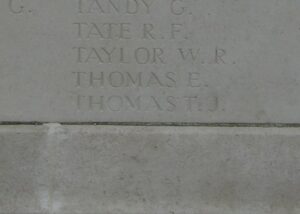
Richard Williams, Private, 34841, Welsh Regiment. Richard was born at Gwynfil in 1888, the son of Maud Williams, and the grandson of Maria Williams, of Tynwern, Llangeitho. He enlisted into the 13th Battalion, Welsh Regiment at the outbreak of war, which trained at Rhyl before moving to Winchester in the summer of 1915, attached to 114 Brigade, 38th (Welsh) Division. The Division moved to the Nursery Sector at Fleurbaix for trench initiation and training, remaining there over the coming weeks. On 19 February 1916, Richard was with a ration party taking supplies up to the front line at Kings Road when both he and another man were wounded. Both were evacuated to the hospital at Merville, which is where Richard died on 21 February 1916. Richard was 28 years old, and is buried at Merville Communal Cemetery, France.
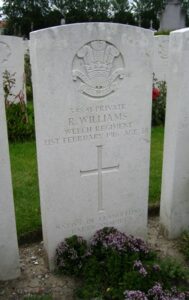
Tudor Ceitho Worthington, Corporal, 26485, South Wales Borderers. Tudor was born in 1894, the son of Reverend David and Mary Worthington, of The Rectory, Llangeitho. He was educated at Ellesmere College, Shropshire, before enlisting at Lampeter into the South Wales Borderers. Tudor was posted to France in 1916, joining the 1st Battalion, South Wales Borderers, which was attached to 3 Brigade, 1st Division. Tudor would have fought on the Somme with the battalion that year. They followed the German retreat to the Hindenburg Line in early 1917, before moving to the Flanders Coast during the summer of 1917. After the Third Battle of Ypres had become bogged down, the Division was moved to Ypres, where it fought at the Second Battle of Passchendaele. After spending another Winter in Flanders, it was near Estaires when the Division was caught up in desperate fighting following the German Spring Offensive. Prior to the great offensive of August 1918, the Division moved to Arras, fighting at the Battle of Drocourt-Queant, and at the Battle of Épehy, pushing on towards the St. Quentin Canal. After the breaking of the Hindenburg Line, the Division fought at the Battle of the Selle. Tudor was killed at the Selle on 28 October 1918. He was 24 years old, and is buried at Romeries Communal Cemetery Extension, Nord, France.
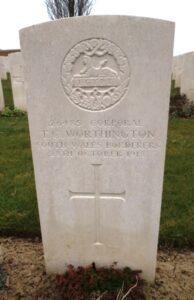
World War Two, 1939-1945
Evan and Mary Evans, Civilians. Evan was born on 26 October 1899, the son of David and Margaret Evans, of Trewern Fawr, Llanbadarn Odwyn. He married Mary Elizabeth Jones, of Llanbadarn Odwyn on 31 October 1924. Mary had been born on 26 October 1899, the daughter of Benjamin and Eleanor Jones, of Trecoll, Llanbadarn Odwyn. At some time soon after the couple moved to London to set up a dairy at 50, Union Road, Stockwell. Their daughter Margaret was born there on 3 February 1926, and their second child, David, was born there in 1931 and the family lived there happily together until the outbreak of World War Two. Following the outbreak of war, the Government had decided to evacuate children and people at risk of bombing, so from 1 September 1939 the first of over 3.9 million evacuees left London. Among the evacuees were the couple’s young children, Margaret and David, who were sent to their family in Llanbadarn Odwyn, where they were split up and lived on two separate farms, just three miles apart. Following the failure of the Luftwaffe to defeat the Royal Air Force during the early stages of the Battle of Britain, the Luftwaffe switched its attention to bombing London and the Blitz began on 7 September 1940. This would prove to be a tremendous error for the Germans, as their continued bombing of the RAF airfields had almost brought them to their knees, but the switch to bombing London gave the RAF the time to rebuild. Evan and Mary were at home on 18 September 1940 when the Luftwaffe mounted another raid on the city and their house suffered a direct hit, killing them both. Evan was 50 years old when he died that day, while Mary was 40 years of age. The couple are interred at Wandsworth Cemetery. Neither are commemorated locally, but are commemorated on a WWII memorial plaque in the Clapham Junction Welsh Chapel, where they worshiped. As with all the Commonwealth Civil Dead from World War II, Evan and Mary’s details are recorded in the civilian books of Remembrance at Westminster Abbey.
Jenkin Davies, Corporal, 6145491, Lincolnshire Regiment. Jenkin was born at Wenallt, Llangeitho in 1917. He was living in London when he enlisted into the East Surrey Regiment, but was later transferred to the 1st Battalion, Lincolnshire Regiment. The battalion was attached to the 26th Infantry Division for the Arakan campaign, moving into Burma in 1942, and participated in the dawn attack on Donbaik on 18 March 1943. The division saw further actions, at Taungmaw on 28 March 1943, and in a raid on a Japanese position at Maungdaw on 5-7 July 1943. Following the Japanese attack on the 7th Division at Sinzweya on 6 February 1944, the 26th Division was called-up from reserve in Chittagong and moved back to the Arakan on 7 February. Advancing from Bawli Bazaar, the Division encountered the most northerly force of the enemy, and after heavy fighting drove the Japanese back over the forests of the Mayu Range into the Kalapanzin Valley. The 1st Lincolns led the ensuing advance on the eastern side of the Mayu Range, and on 16 February 1944, two companies of the battalion were ordered to capture Point 315, overlooking the Ngakyedauk Pass. After a night march through enemy-held territory, the force was met at the foot of the position by devastating machine gun fire. The Lincolns did not waver in their advance and Major Charles Hoey MC led his Coy under heavy machine gun and rifle fire up to the objective. Although wounded in the leg and head, he seized a Bren gun from one of his men and, firing from the hip, led his Coy into the objective. In spite of his wounds the Coy had difficulty in keeping up with him, and Hoey reached the enemy strong-post first, where he killed all the occupants before being mortally wounded. “Major Hoey’s outstanding gallantry and leadership, his total disregard of personal safety and grim determination to reach the objective resulted in the capture of this vital position” and the award of a Victoria Cross. Fifteen other members of the attacking party also died in this VC action, including Davies, who was killed on 17 February 1944. He was 26 years old, and is buried in the Taukkyan War Cemetery, Burma.
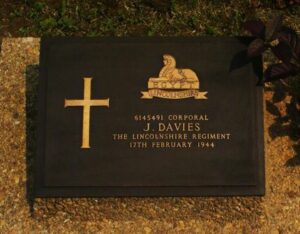
John Dewi Jones, Driver, 10558766, Royal Electrical and Mechanical Engineers. John was the son of Daniel and Maggie Jones, of Heatherdene, Llwynygroes. He served with 4 Non Div. Workshop, Royal Electrical and Mechanical Engineers. John served in North Africa with the 1st Army, and would have participated in Operation Torch. He died at sea on 22 December 1942, aged 23, and is commemorated on the Medjez-El-Bab Memorial, Tunisia.
Thomas Jones, Lance Serjeant, 6144164, East Surrey Regiment. Thomas was the son of John Owen Jones and Eleanor Jones, of Wern, Llanddewi Brefi. The family moved to Llwynyhendy prior to the war. Thomas served with the 1/6th Battalion, East Surrey Regiment. The battalion was deployed to France at the beginning of the war and fought in Belgium and the retreat to Dunkirk. The battalion was then posted to North Africa, taking part in the Tunisian Campaign in 1943. Thomas was killed in North Africa on 13 April 1943. He was 24 years old, and is buried at Beja War Cemetery, Tunisia.